
Need assistance?
Need Assistance? Call Us 0330 058 0630
















22/09/2025 • by Alice P

When it comes to protecting your home, smoke alarms are often seen as the first line of defence.
They play a vital role in fire safety by detecting smoke and giving early warning to occupants. However, relying on smoke alarms alone may not provide full protection.
For complete home fire safety, our technical experts at Fire Detection Shop recommend looking beyond smoke alarms and considering additional measures as well as understanding the distinction between the various types of alarm on the market.
Smoke alarms remain a must-have in every property. They are quick to install, inexpensive and proven to save lives by providing early warning of a fire.
In most UK homes, fire legislation requires working smoke alarms on every level of the property. But smoke is not always the first or only sign of danger...
In kitchens, garages, and lofts, smoke alarms are prone to false alarms from cooking fumes or dust. This can lead to detectors being removed or disabled, leaving dangerous gaps in protection.
Heat alarms are the solution.
Instead of detecting smoke, heat alarms respond to a rapid rise in temperature or a fixed heat threshold. They are ideal for areas where smoke alarms are unsuitable and ensure fires are still detected at an early stage.
Pairing smoke alarms in living spaces with heat alarms in kitchens or utility rooms gives much more reliable coverage.
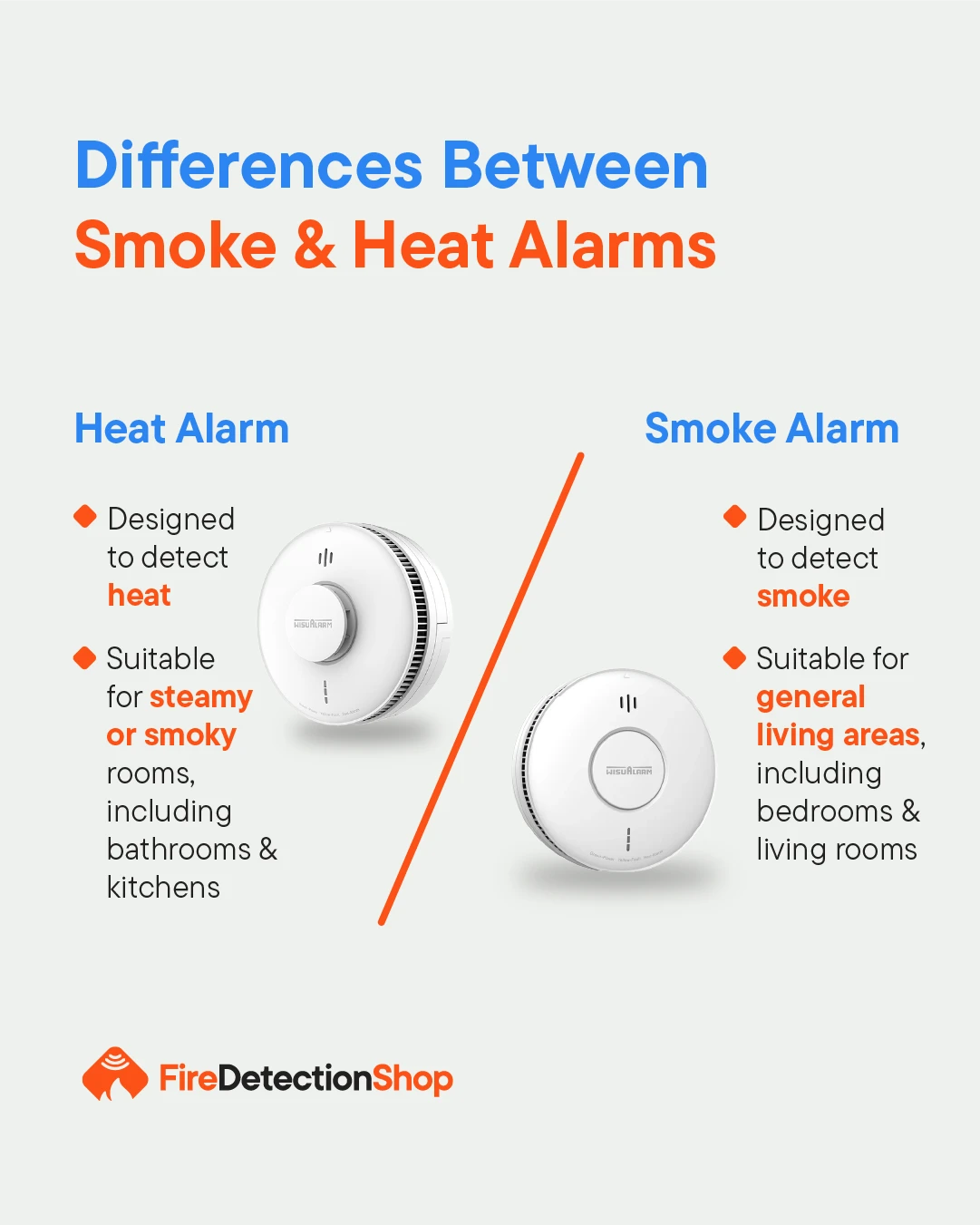
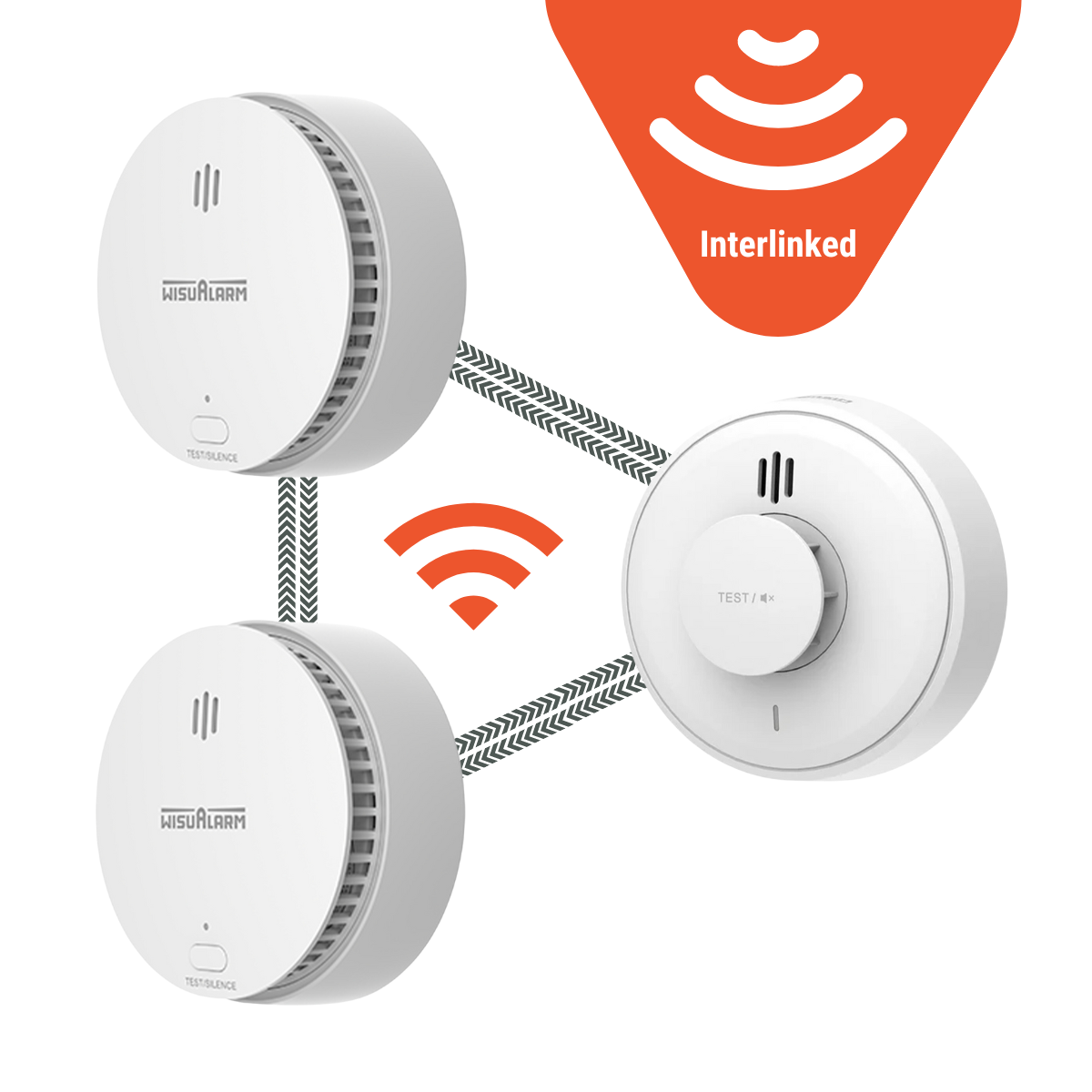
ex vat
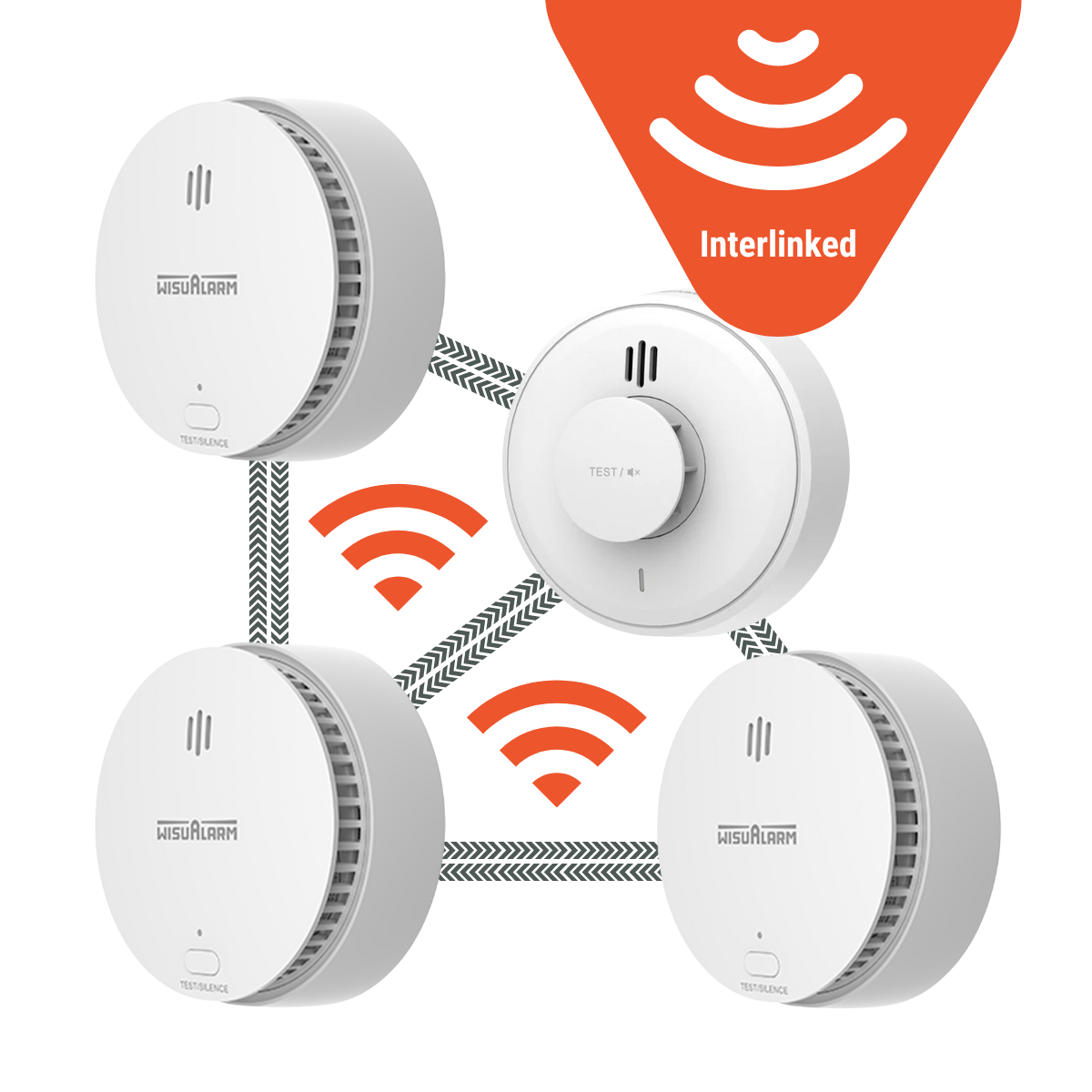
ex vat
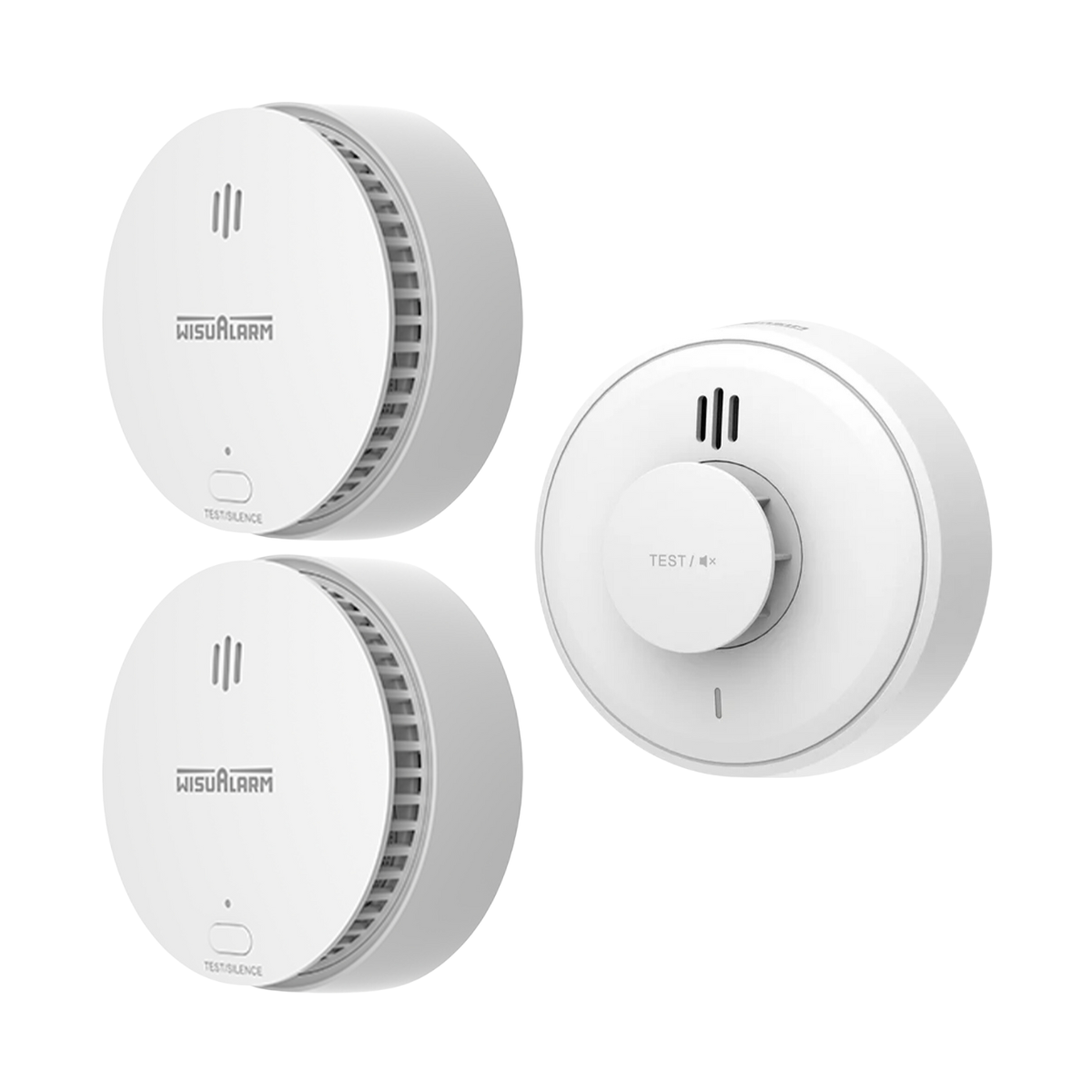
ex vat
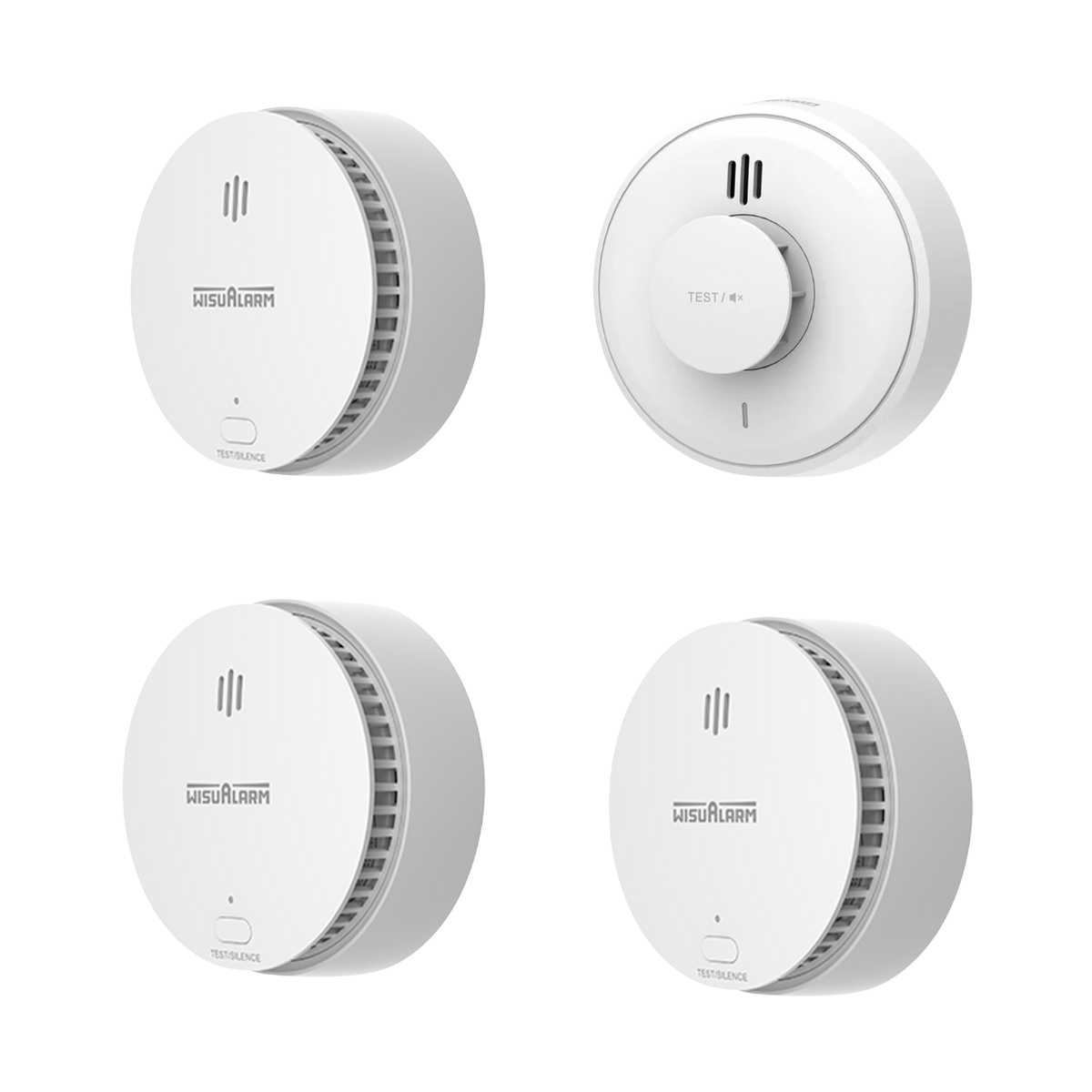
ex vat
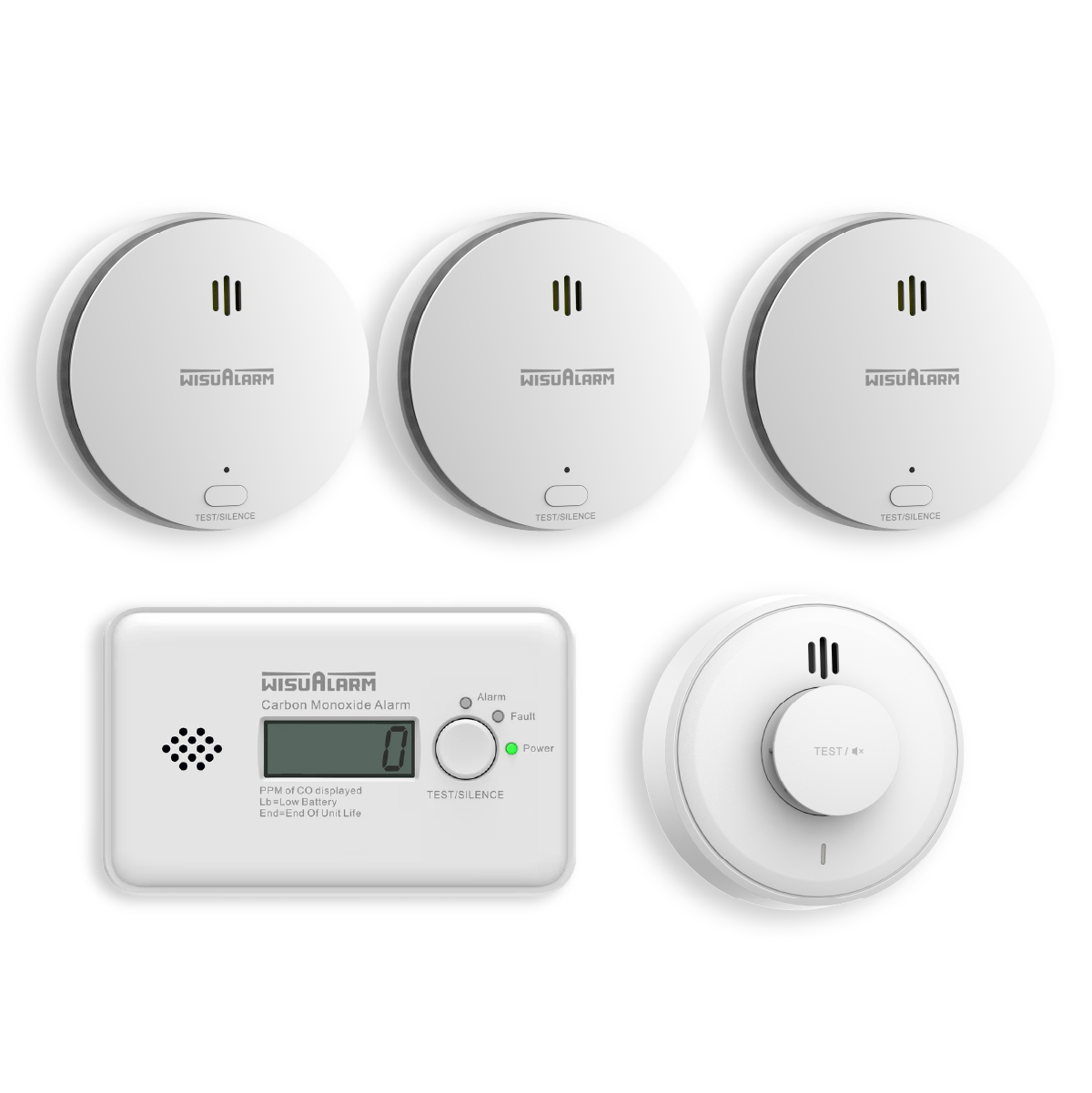
ex vat
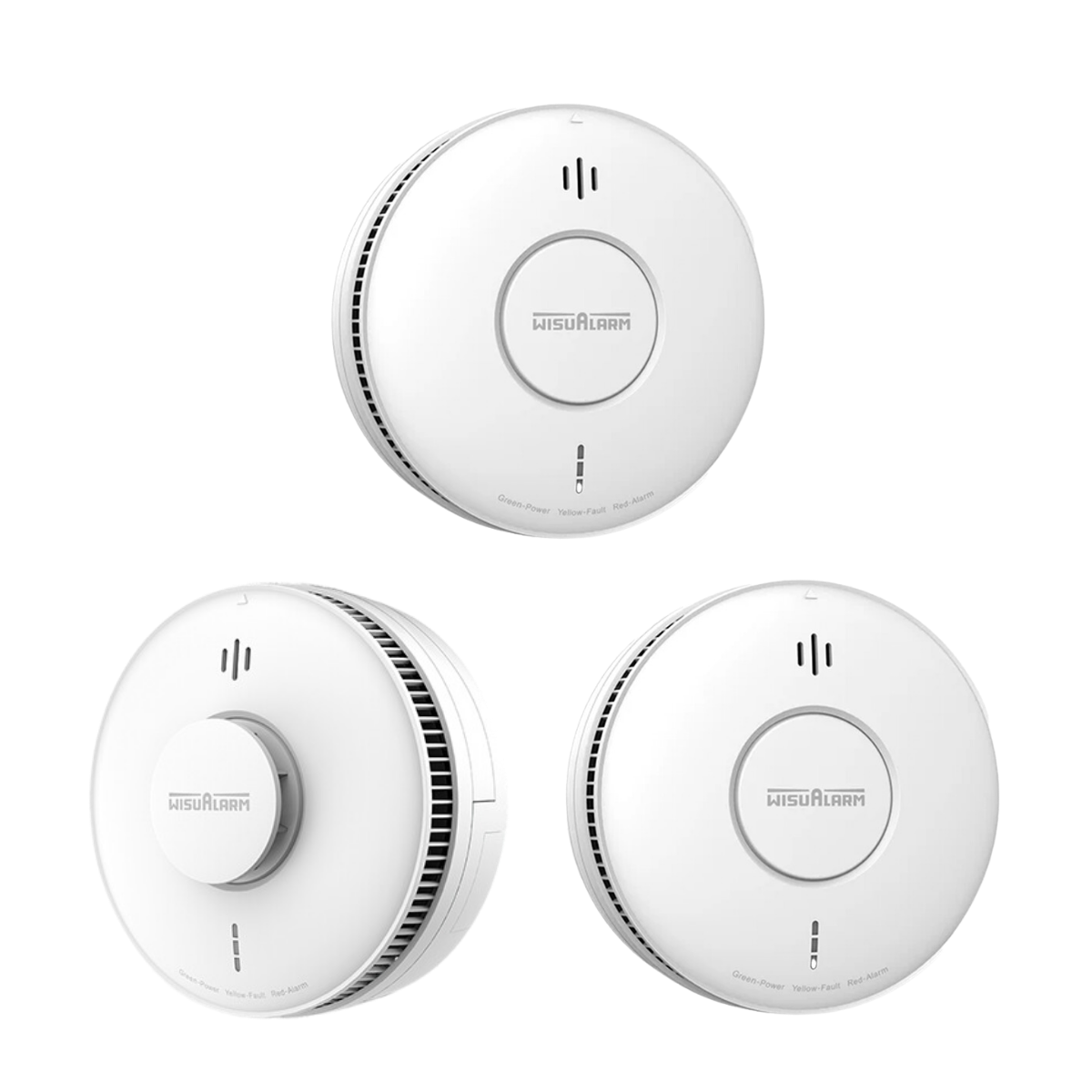
ex vat

ex vat
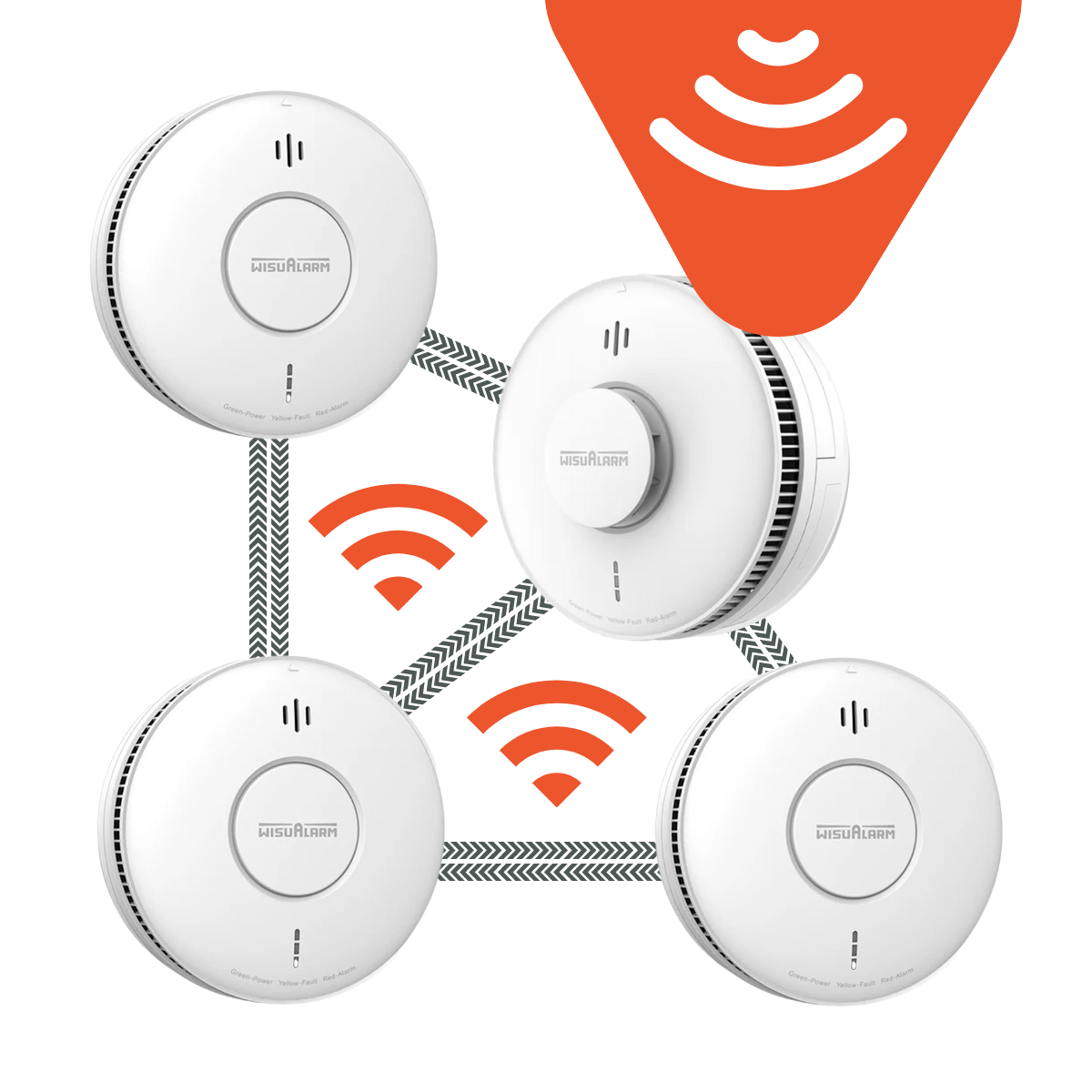
ex vat
.png)
ex vat
Fire safety doesn’t stop at flames. Carbon monoxide (CO) is a silent killer, an invisible and odourless gas produced by faulty boilers, gas fires, and other fuel-burning appliances.
Standard smoke or heat alarms will not detect it, which is why a dedicated CO alarm is essential.
We do not recommend using a combined smoke and CO alarm in most situations.
This is because smoke rises and is best detected at ceiling height, while carbon monoxide mixes differently with the air and can spread at various levels in a room.
Separate alarms placed correctly provide much more reliable protection.
Every home with gas appliances, log burners, or open fires should have at least one CO alarm. For larger properties, multiple alarms placed near bedrooms and fuel-burning appliances provide the best coverage.
Modern CO alarms are compact, easy to install, and often come with 10-year sealed batteries for maintenance-free safety.
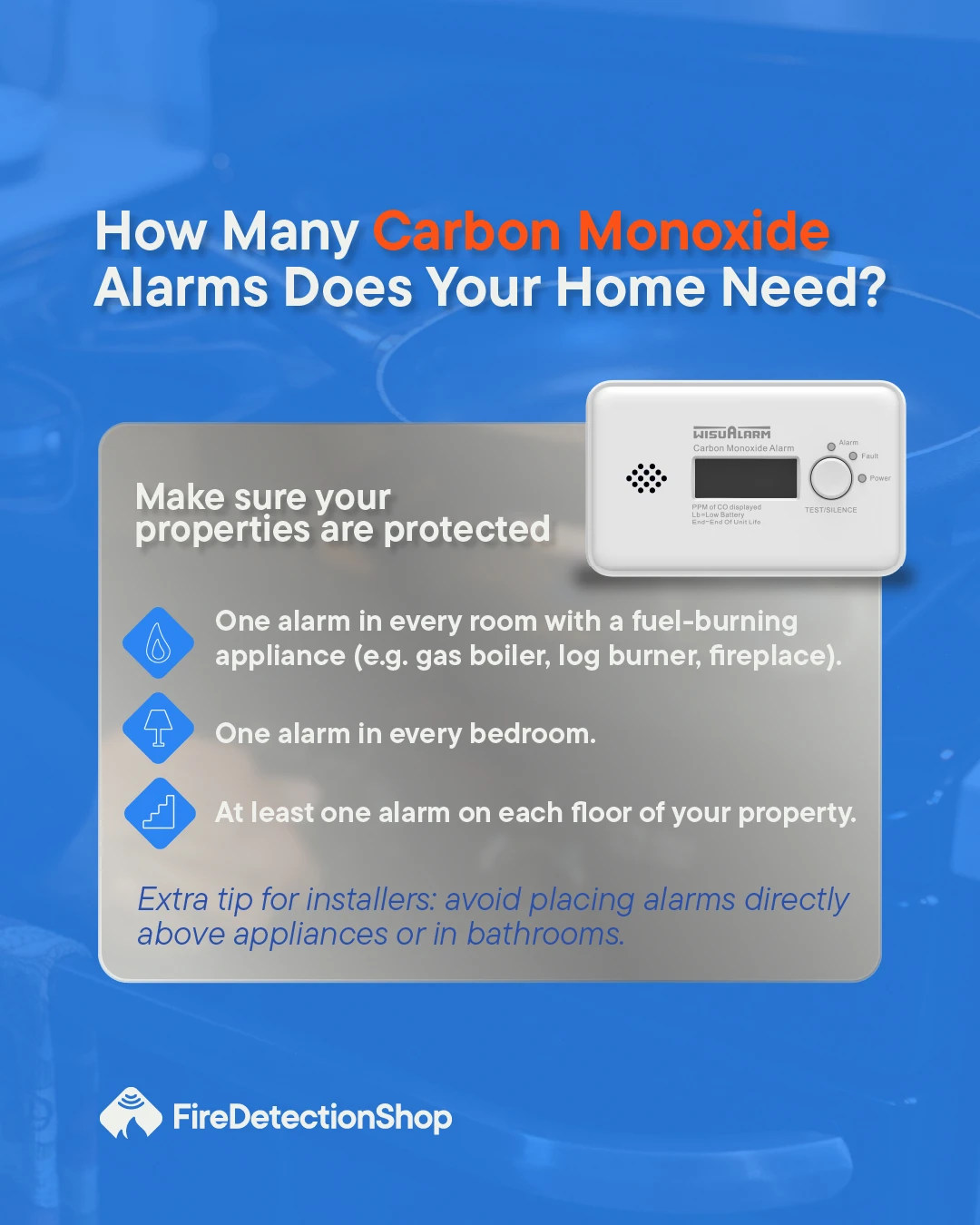
A truly safe home is one that covers every risk:
Smoke alarms for bedrooms, hallways and living areas
Heat alarms for kitchens, garages and dusty areas
Carbon monoxide alarms near boilers, stoves and sleeping areas
Together, these devices form a reliable early-warning network that gives you and your family time to act before it’s too late.
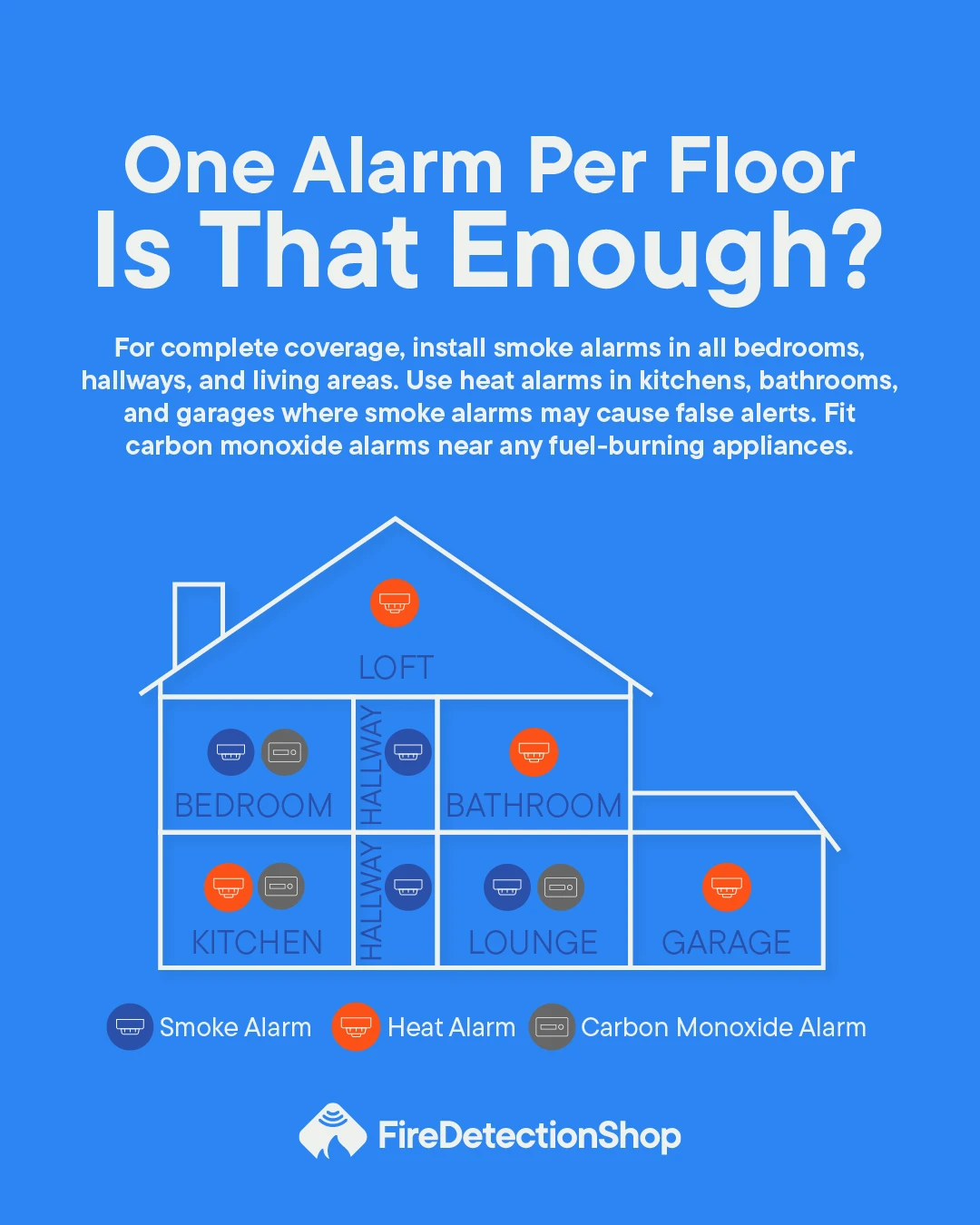
Smoke alarms save lives, but they are only one part of the picture. Adding heat alarms in high-risk rooms and CO alarms where fuel is burned creates a comprehensive safety system for your home.
At Fire Detection Shop, we stock a wide range of interlinked smoke, heat, and carbon monoxide alarms designed to work together and meet the latest UK safety standards.
Protect your property properly...don’t just stop at smoke.
We use cookies to enhance your site experience. Choose your preferences below.
